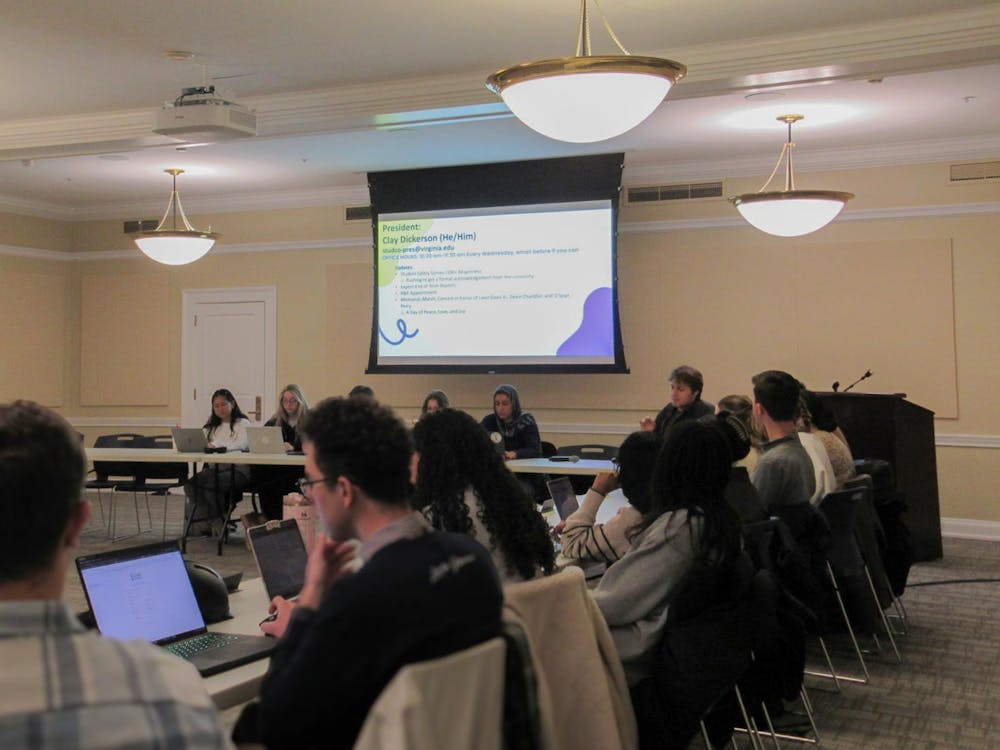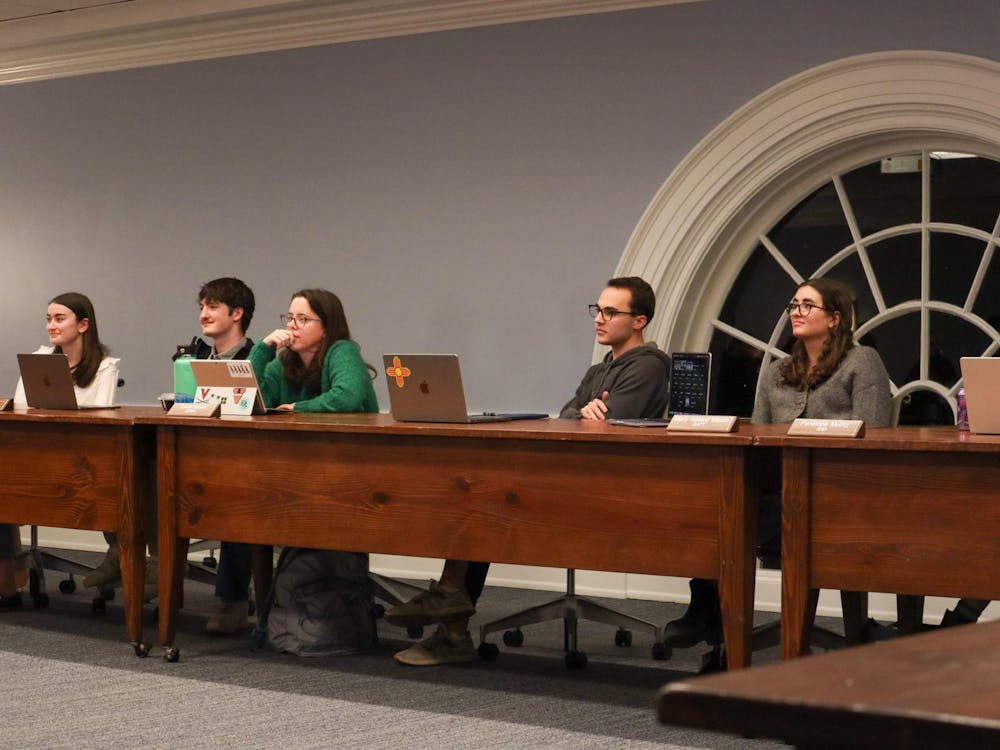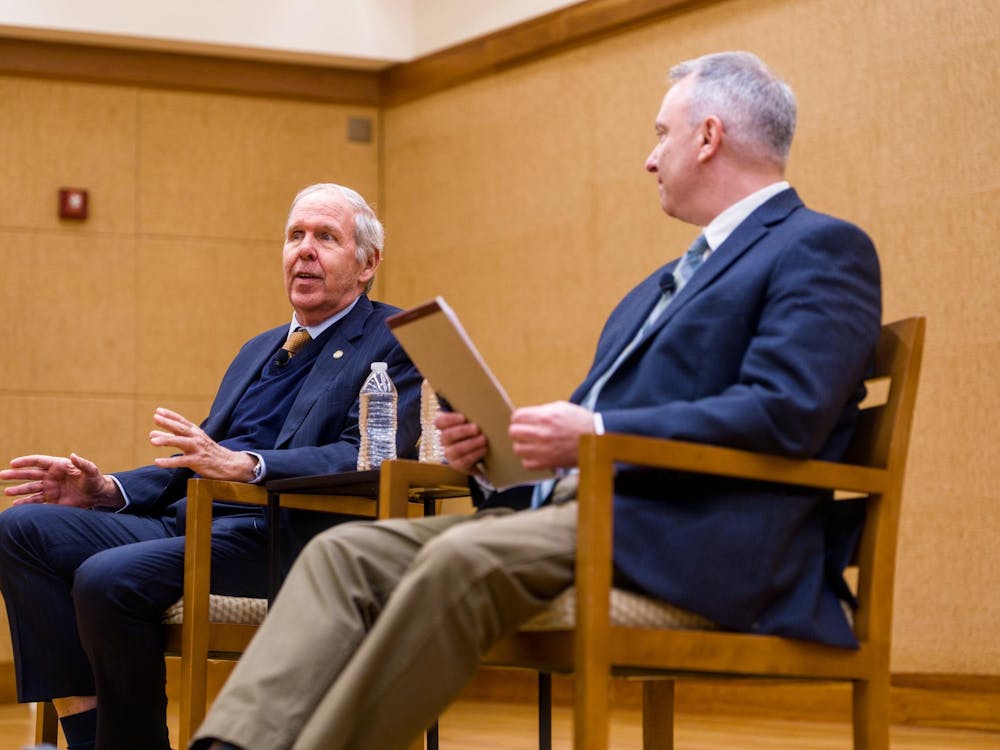Music professors work at desks crammed into small offices that were originally designed to be storage closets. Painting students don't have enough room to comfortably prop their easels in art classrooms. Upper-level music students don't have access to concert halls to perform their symphonies.
The University is in the process of revitalizing arts around Grounds. The arts departments have a vision of a University where drama, music and art can flourish, a place with more space for arts department faculties and students, an improved art museum and overall more successful arts programs.
Facing space issues
Both faculty and students noted that art, music and drama cannot thrive without sufficient physical space.
Art Department Chair Lawrence Goedde said the University's limited space is his department's biggest issue.
"The single biggest problem that faces all of the arts programs at the University is space," Goedde said. "The facilities are either cramped or unsuitable."
Space issues not only make the arts physically uncomfortable to participate in because of cramped conditions, but the shortage also restricts the number of students who can participate in University arts programs.
Music Department Interim Chair Katharine Maus agreed that limited space has negative effects on the music department.
"The building that the music department is in is small for the activities it is running," Maus said. "There is a very tight rehearsal space, tight space for people currently giving lessons."
She added that the music department offices are especially cramped.
"[Some of the] music department offices, I hear, used to be places for storing instruments," she said.
She also said full-time faculty members are lucky to have any offices at all, given that part-time staff do not.
Maus said the music department is particularly affected by space issues because of noise concerns.
"You can't just put music lessons anywhere there is free space," she said. "We call this 'noise bleed.'"
Maus said music lessons are limited to a small old house on Jefferson Park Avenue, because, no matter how sweet a symphony is, no class can proceed with loud music playing in the classroom next door.
"There are restrictions" to where the students can practice, she said.
University Art Museum Director Jill Hartz agreed space was a critical problem.
"We've done a lot with our facility, but our facility is inadequate," Hartz said.
Among other issues, including improper climate control, Hartz said the museum is severely lacking in space.
"We have people working in trailers, we have collections stored outside," she said. "We can't accommodate our program and our staff in this building, and there's incredibly limited parking so we're not very accessible."
Hartz added that it would be ideal to have additional space in the museum for classrooms.
"We have no hands-on education space in the museum," she said. "The ability to actually have some studio component would be great."
While space and funding is currently limited, former Drama Department Chair Bob Chapel said he was optimistic about the ability of the department to get more resources.
"There is no question space has been a concern," Chapel said. "We hope that as we keep progressing and growing this will happen less and less."
Money, money, money ...
Money is often made the center of conversation concerning expansion of the arts departments. Not only are new facilities expensive, all other facets of expanding arts programs are expensive as well.
"Changes in the music department are expensive propositions," Maus said. "It's expensive to educate."
She added that upper-level music students require one-on-one instruction.
"It's hard in music to have a lot of economies of scale," Maus said. "I suspect this is true in drama and art as well."
Hartz said the museum has a hard time competing with core academic departments for the University's limited financial resources.
"We really are a key academic resource, but because we're not teaching courses right here, it's hard to compete with the programs that are," she said.
Raising money for the arts poses unique challenges.
"It's not like athletics where you know there's a really strong [support] base," Hartz said. "In the arts, we're still trying to say, 'Who are our advocates out there and do we have enough to make things happen?'"
'A poor stepchild' no longer
Up until about 20 years ago, the University seemed to be doling out only leftovers to the University's arts departments.
Arts at the University in the past, as Chapel said, were "a poor stepchild."
Now, Chapel said, the University is recognizing the importance of the arts with renewed vigor.
"In the last 15 years, maybe before that, it became more important," he added. "For awhile as the University evolved, the arts were not a central focus, but there came a point in the last 20 to 25 years, I have seen a real change in regards to how serious [the administration is] about making the arts a vital part of the University."
Several years ago, Chapel served as chair of the Virginia 2020 Fine and Performing Arts Commission, which studied how to make University arts programs more competitive.
"Everyone at the University would love for the arts to grow," Chapel said.
Chapel said throughout the course of his tenure he felt the University's support behind the arts.
Goedde said University President John T. Casteen, III has been talking about improving the arts for over 10 years now.
"By the mid 1990s, the President was already talking about the importance of the arts and the development of the arts," Goedde said. I feel the University is really behind what we've been trying to do. So my 15 years with the deans I've worked for in the College of Arts & Sciences have been very supportive, both in terms of their spirit and helping us whenever they could financially."
New plans
The University is taking big steps and planning even bigger strides for a more artful university.
"Real things have happened," Chapel said. "There was Fayerweather Hall and we just broke the grounds for the Ruffin Hall, the new studio arts building."
Goedde said Fayerweather Hall, which is being renovated as the new art history building, should be completed for late spring.
The initial groundbreaking ceremony for Ruffin Hall was held two weeks ago.
A new art museum will enhance the University in the next decade as well.
"There is active planning going on for a new University art museum," Goedde said.
Hartz said her museum and its programming have come a long way over the last nine years.
"I like to think of this as the little museum that could," Hartz said. "I think we've done a lot over the past years in increasing our visibility with the University and administration."
Hartz said plans for the new museum are tentative.
"It's a new thing for this University to have a major campaign in the arts and there's a lot of work that needs to be done to make it successful," she said.
Hartz said the University's original goal was to have the new museum completed by 2010.
"I don't know if that's realistic or not," Hartz added.
When it is completed, Hartz said she hopes she will have more space to show collections and the museum climate will no longer be an issue when considering which works of art to display.
Maus is also encouraged by plans the University has for a new music department building.
Maus added that the University has yet to name an architect to design a new music and performing arts center slated for the site of the Cavalier Inn, she is optimistic that progress is underway.
"There will be a new building for drama and music," Maus said. "Casteen and other higher-ups are just on the verge of picking an architect."
She added that it will be a long, complicated process.
"The exact design is a very specialized type of architecture," Maus said. "I think the University has a lot of development efforts and is putting a lot of effort into developing sources of funding for the arts."
Maus said before a new music building is underway the University will have to make explicit financial plans.
"There need to be donations," Maus said. "It will take a while to accrue money and to plan for a new music and performing arts building."
Hartz said the arts community is excited to finally have the chance to shine.
"The arts have traditionally lagged behind, so I'd like to think it is our turn now," Hartz said.
Potential results
It will take up to a decade for the University to erect and enact its multitude of plans for the arts.
Maus said that a historic lack of funding for arts programs probably has kept programs from developing, and that newer and more adequate structures for the arts will allow departments to flourish.
"It's hard to say that it has damaged the programs," she said. "It has just put a lid on how much they grow."
Goedde said that the new facilities and the new plans will attract more students.
"The Dean of [the College of] Arts & Sciences, Ed Ayers, has talked about attracting more students to the arts," Goedde said.
Goedde said that new spaces will allow the different arts departments to collaborate better with one another.
"One exciting idea about an arts precinct is that the art department and drama will be close together and close to architecture as well," he said. "The opportunity for more interaction between the arts departments is a result of this."
Goedde said with more space, dance is one program that could also really develop and grow.
"Drama is very interested in seeing a more fully developed major in the dance program," Goedde said. "This is again where facilities come in."
He said additional space and additional faculty will be vital in developing the arts.
Show director of Rhapsody Dance, Kate Gilchrist, said the presence of other universities with stronger arts and dance programs might detract some students attending the University.
"Other universities such as James Madison University and Radford University have dance programs," Gilchrist said. "I would certainly study dance if I could."
Gilchrist said at present a new dance minor is still in the final stages of development.
Other factors may have also deterred artistically oriented students from attending the University in the past as well.
Goedde said prospective students once took one look at Fayerweather Hall and immediately their interest waned.
Better arts programs will attract more artistic students, the faces of the University's arts community all agreed. They seemed confident the University is headed in an artistically successful direction.
Senior Writer Anthony LaMesa contributed to this report.






